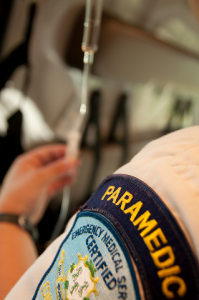 Why did the EMTs (ambulance) and Paramedics arrive separately?
Why did the EMTs (ambulance) and Paramedics arrive separately?
EMTs are able to perform a specific set of skills that do not include such advanced treatments as IVs, EKG heart monitoring, IV medications, advanced airway techniques, nebulizers and more. Paramedics are required in the treatment of patients with chest pain, difficulty breathing, altered mental status, severe accidents and injuries and many other types of medical emergencies.
Simply put, when a 911 call is received that meets certain criteria, an EMT level ambulance (BLS) and a paramedic service (ALS) are dispatched simultaneously. Upon arrival, if the patient needs any of the treatment listed above, the paramedic will then ride aboard the local ambulance to deliver that care. If the patient’s condition does not require a paramedic, they are sent away to be available for other calls. This is why you may see (or have seen) two ambulances at one emergency for one patient.
If you have more questions regarding this type of billing, please call our billing office during regular business hours of Monday-Friday 7am-5pm at (860) 647-9798.

Interestingly, the traffic to this page has increased recently even though this topic is not necessarily new. It should be pointed out that there are other options aside from a tiered response that may be a better fit for certain towns, especially when they reach a certain population level. For example, in other states such as California, an ALS ambulance and BLS ambulance are dispatched and the condition of the patient dictates which one transports. Two ambulances respond but only one transports.
To many informed outsiders looking in however, regionalization is often the most efficient and effective use of resources in many areas. Rural areas continue to operate very effectively with volunteers and call staff. Ultimately if excellent patient care is in the center of every decision the best system will prevail.
Lest we not forget aemt’s they can also establish iv’s and advanced airways